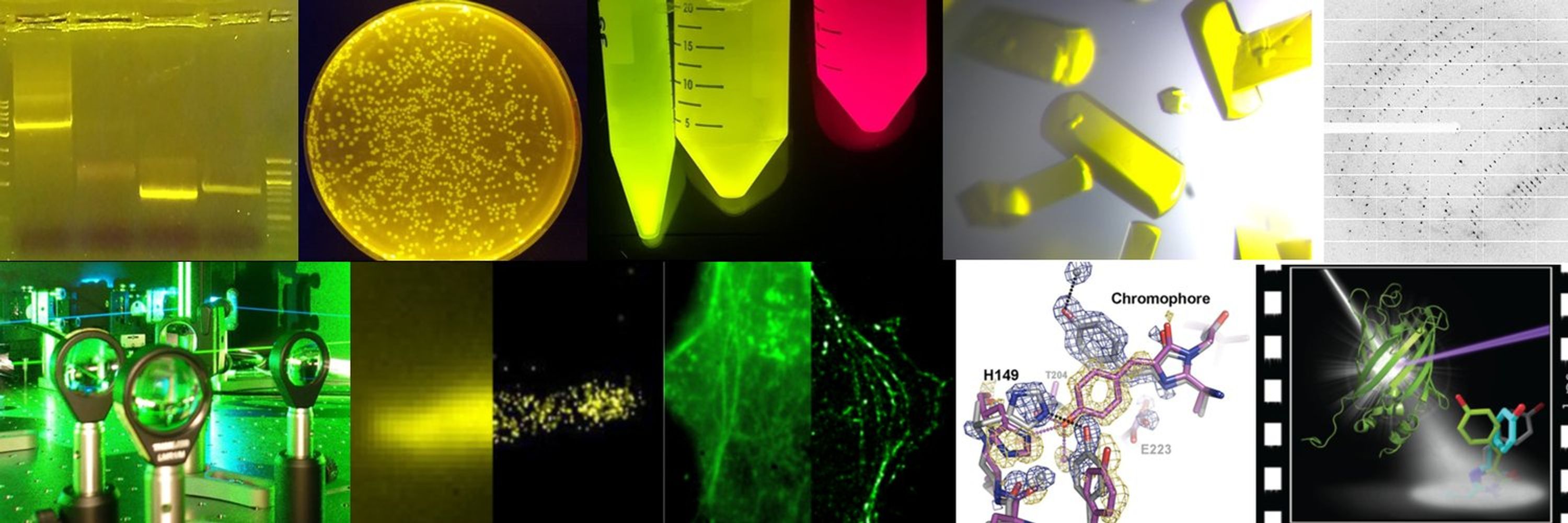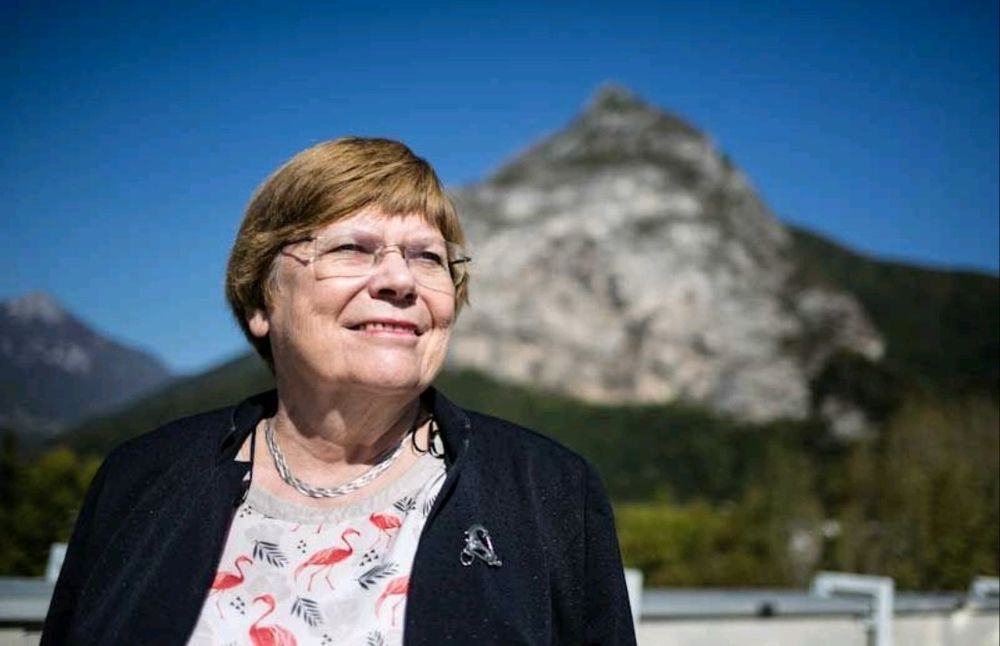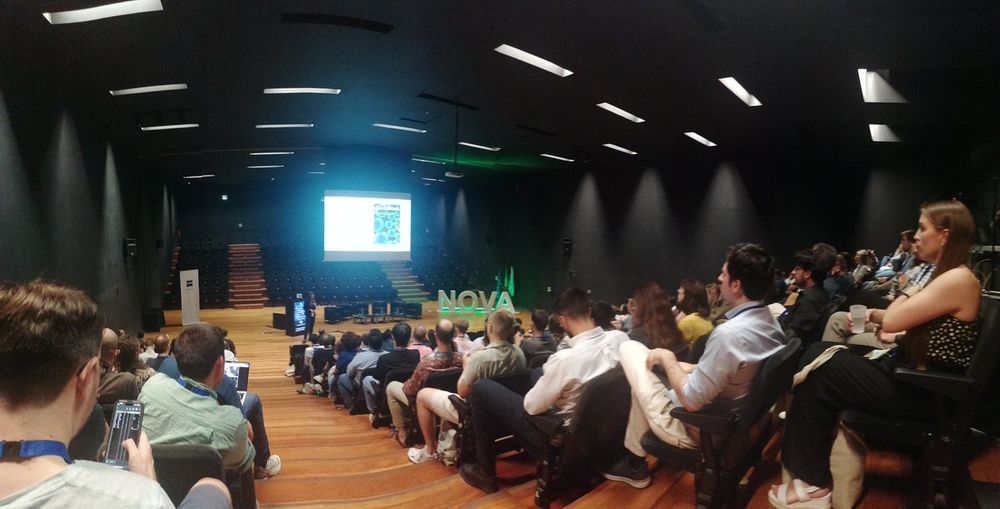Virgile Adam
@drfluo.bsky.social
210 followers
480 following
130 posts
#CNRS #researcher (PhD/HDR) working on : #FluorescentProteins 🧬; #MolecularBiology 👨🔬; #SMLM 🔬; #Crystallography 💎; #Biochemistry 🧪..
Posts
Media
Videos
Starter Packs
Virgile Adam
@drfluo.bsky.social
· Aug 29
Virgile Adam
@drfluo.bsky.social
· Jun 1
Virgile Adam
@drfluo.bsky.social
· Apr 18
Virgile Adam
@drfluo.bsky.social
· Jan 6
Virgile Adam
@drfluo.bsky.social
· Dec 19
The 3D Organization of Our Genome
Keywords: Genome, chromosome, chromatin, 3D Genome, Epigenetics
Synopsis: This video recapitulates our current understanding of genome organization in the three-dimensional space of the cell nucleus, starting from nucleosomes, which wrap 146 base pairs of DNA, all the way to entire chromosome territories that may contain hundreds of million base pairs of DNA sequence. In-between these two extremes, the hierarchical folding of the chromatin fiber into “nucleosome clutches”, “chromatin nanodomains or CNDs”, “Topologically Associating Domains or TADs” - including their mechanism of formation via loop-extrusion - and the “A and B compartments” are presented. We include below references that support and supplement what is described in our video. We stress that some of the mechanisms involved in 3D genome organization are still debated in this research field. We also include below additional videos on the subject.
Additional videos on the subject:
1 – The video linked below illustrates the “classical paradigm” of chromosome organization corresponding to the part up to 1’03’’ in our video:
- https://www.youtube.com/watch?v=gbSIBhFwQ4s
2 – The following videos present the loop extrusion mechanism involved in TAD formation, described starting from 2’03’’ in our video:
- https://www.youtube.com/watch?v=8FW6gOx5lPI
- https://www.youtube.com/watch?v=Tn5qgEqWgW8
References to pioneer works:
1 – A selection of recent review articles that discuss further our understanding of genome architecture and its functional consequences, described starting from 1’04’’ in our video:
- https://www.scientificamerican.com/article/untangling-the-formation-of-dna-loops/
- https://doi.org/10.1038/s41576-018-0060-8
- https://www.science.org/doi/10.1126/sciadv.aaw1668
- https://doi.org/10.1038/s41580-021-00362-w
2 – A selection of key scientific articles that describe the different layers of chromosome organization presented in our video can be found on the internet at the "doi" links indicated below. Note that some of the articles requires a subscription to the respective scientific journal.
0’27’’: The Watson and Crick DNA structure, 1953:
- https://doi.org/10.1038/171737a0
0’30’’: The Nucleosome crystal structure, 1997:
- https://doi.org/10.1038/171737a010.1038/38444
0’38’’: The 30-nm chromatin fiber has been considered for a long time to be the most basic layer of higher-order chromatin compaction, being part of the classical model. Today, the 30-nm fiber appears to be more an exception than the rule and is only observed in specific cells:
- https://doi.org/10.1016/j.yexcr.2012.02.014
- https://doi.org/10.1016/j.ceb.2019.02.003
1’23’’: Nucleosome clutches, were discovered in 2015 and confirmed in 2017 thanks to advanced microscopy methods:
- https://www.cell.com/action/showPdf?pii=S0092-8674%2815%2900132-4
- https://doi.org/10.1126/science.aag0025
1’37’’: Chromatin nanodomains or CNDs are globular chromatin structures of 150-300 nm size, uncovered by using various superresolution fluorescence imaging methods:
- https://doi.org/10.1016/j.molcel.2017.06.018
- https://doi.org/10.1038/s41588-020-00716-8
- https://doi.org/10.1126/sciadv.aba8811
1’50’’: Topologically Associating Domains or TADs were uncovered in 2012 by 4 different laboratories, using a next-generation sequencing-based chromosome conformation capture method called Hi-C in Drosophila, mouse and human. They were later confirmed in other species:
- https://doi.org/10.1016/j.cell.2012.01.010
- https://doi.org/10.1038/nature11049
- https://doi.org/10.1038/nature11082
- https://doi.org/10.1016/j.molcel.2012.08.031
2’03’’: The Loop extrusion mechanism, involving Cohesin and CTCF, seems to be a key mechanism for TAD formation in mammals and is widely studied. Below, a selection of articles on the subject. Note that the exact extrusion mechanism is still under debate and probably differs from the one shown in this video:
- https://doi.org/10.1038/s41580-021-00349-7
- https://doi.org/10.1016/j.celrep.2016.04.085
- https://doi.org/10.1016/j.cell.2017.04.013
- https://doi.org/10.1038/s41586-019-1910-z
- https://doi.org/10.1016/j.cell.2017.05.004
- https://doi.org/10.1016/j.cell.2014.11.021
- https://doi.org/10.1016/j.cell.2017.09.026
- https://doi.org/10.1073/pnas.1518552112
- https://doi.org/10.1038/nature24281
- https://doi.org/10.15252/embj.201798004
2’42’’: A and B compartments were described for the first time in 2009. Later, they were confirmed by other laboratories:
- https://doi.org/10.1126/science.1181369
- https://doi.org/10.1126/science.aaf8084
2’54’’: Chromosome territories represent the final layer of chromosome organization. They were first observed by DNA in situ hybridization in 1985 confirmed in many species:
- https://doi.org/10.1007/BF00388453
- https://doi.org/10.1007/BF00388452
- https://doi.org/10.1371/journal.pbio.0030157
- https://doi.org/10.1101/cshperspect.a003889
Enjoy chromosome biology!
www.youtube.com
Virgile Adam
@drfluo.bsky.social
· Dec 19
Phage-triggered reverse transcription assembles a toxic repetitive gene from a noncoding RNA
Reverse transcription has frequently been co-opted for cellular functions and in prokaryotes is associated with protection against viral infection, but the underlying mechanisms of defense are generally unknown. Here, we show that in the DRT2 defense ...
www.science.org






















